The Danish Ministry of Defence has selected the SAMP/T NG air defence system to strengthen national air defence and ensure interoperability with European and NATO forces, with Thales playing a key role as system integrator alongside MBDA, the company stated.
SAMP/T NG is a mobile ground-to-air system designed to intercept and destroy medium-range ballistic missiles, aircraft and drones.
Each Danish system will use Thales’s Ground Fire radar, produced in series since early 2025, which the company described as offering “revolutionary performance” with a range of up to 400 km, 360° panoramic coverage, and 90° elevation.
According to Thales, the radar uses fully digital active electronically scanned array (AESA) technology to detect, track and classify multiple targets in complex environments, including mountainous terrain and congested airspace. It can detect drones and ballistic missiles, while its compact ISO-container design enables high mobility with short installation and dismantling times.
The system is designed to integrate with the Aster family of missiles, for which Thales provides the seeker, and will include Thales’s Command and Control Engagement Module New Generation, developed in cooperation with MBDA. Thales noted that the open architecture of SAMP/T NG allows interoperability with other European systems, enhancing collective defence capabilities.
Hervé Dammann, Executive Vice-President for Land and Air Systems at Thales, said in the press release: “Thales is honoured by the choice made by the Danish authorities. With Eurosam and MBDA, we sincerely thank our client for their trust. The Danish armed forces will benefit from a state-of-the-art system to guarantee the protection of their airspace and contribute to the defence of European countries and NATO.”
The SAMP/T NG programme is managed by OCCAR, with Eurosam, a joint venture between Thales and MBDA, acting as lead contractor. Thales highlighted that the Ground Fire radar maximises the performance of the new generation Aster 30 missile and underpins European strategic autonomy in medium-range air and missile defence.


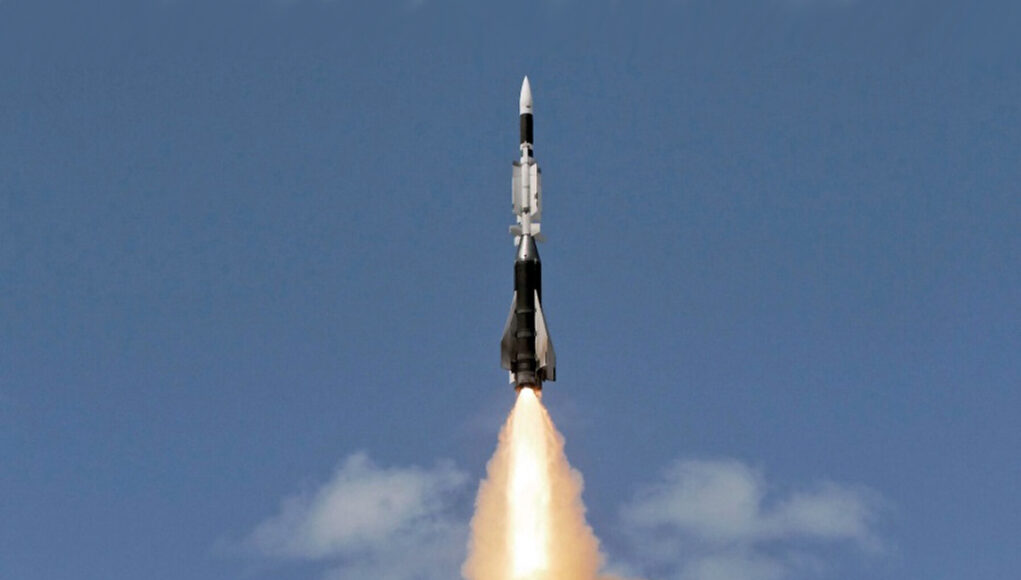

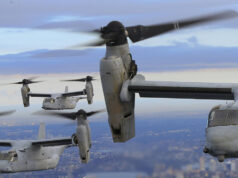


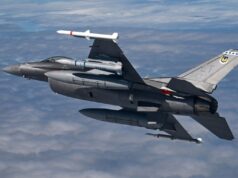
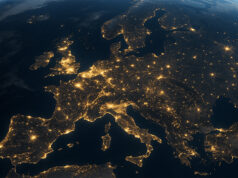
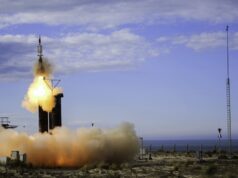
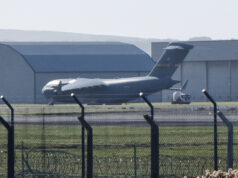

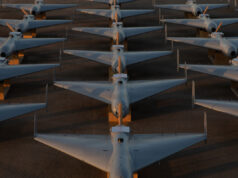

Glad to see that the SAMP/T NG is being procured, rather than the old SAMP/T. The original Arabel radar system has long been identified as a limiting factor (being out-ranged by the missiles the system uses) for both AAW and BMD, as noted in Ukraine, where the system reportedly struggled against ballistic targets.
I’d remind those who think this is a perfect option for the BA/RAF that each system costs roughly $500 million (4-6 launchers, 1 radar, 1 C2 module), is still limited in its range and capability and that the production rate for the Aster-30 and its variants remains low.
I was about to ask the cost of such a system, I see you gave that already, thanks.
Yeah, one of the factors that led to the Danish decision being a surprise for many is that Patriot would have offered a cheaper, better system with greater rates of missile production given the German lines.
On the other hand, buying from the nations threatening to annex your territory is a little backwards.
$500m x 4 to defend the Deterrent, Portsmouth, Devonport and those scarce P-8 doesn’t seem too high an investment considering they tell us we are on a war footing.
Defend them from what? There are better options for protecting those sites against submarine-launched cruise missiles, and any ballistic missile threat to the UK from the Russian Federation would be beyond the capability of the SAMP/T NG to actually engage. SAMP/T isn’t doing shit if something like an Oreshnik is launched against the UK.
Submarine-launched ballistic missiles at a push, but IINM that’s only the Tskirkon, at which point the SAMP/T isn’t going to be doing much to help you, especially against an attack at scale. It’s radar is good, but it just can’t provide the capability or power that a naval system can. You’d be better off placing a destroyer, either a Type 45 or an Arleigh Burke in the Channel or outside Faslane.
Basically, it’s a very expensive and limited fig leaf. You’d be better off (IMO) investing in more mobile and capable naval units – for example, getting the USN or KM to place those sites under their SM-3 protection in the short term whilst investing in procuring at least eight new FADS destroyers in the long term.
Additionally, a better protection could also be investing in our own offensive capabilities, so that Russia knows that should they for example strike Faslane, we could then strike Murmansk back. Make the conventional consequences of hitting our naval bases too unpalatable for them to consider that move.
Interested to hear your opinion on why SAMP-T NG could not engage an IRBM such as Oreshnik or its payload once deployed? The SAMP-T and SAMP-T NG uses a derivative of the PAAMS combat management system (SMS) as used by the T45 and the French/Italian Horizons. The Dutch chose SAMP-T NG with the Ground Fire 300 radar. This radar builds on the development of the NS100 (will be used by the T31) and NS200 radars. The maritime version of Ground Fire called, the Sea Fire radar, has been chosen by the French Navy’s FDI frigates. Ground fire was developed to detect and track hypersonic targets.
I’m going off MBDA’s claims. They state the B1NT as being capable against BMs with ranges of roughly 1500km. Given the Oreshnik does more than 1000km more than that figure, I’d reason that the B1NT would not be able to reliably defend against it.
You might be able to hit a couple of MIRVs on their way in, but SAMP/T NG couldn’t reliably defend against all of them. The interceptor is just outclassed.
Compared to the earlier SAMP-T, the NG is a step change in capability. The system will have a far better chance at intercepting most of the MIRVs, than the previous version. In a lot of respects the Aster missile is a better interceptor than something like the Patriot PAC-3 MSE. Two immediate reasons come to mind. The first is Aster is a 2 stage missile, whereas Patriot is one piece missile. Once the Aster’s 1st stage burns out, it is discarded, leaving the smaller 2nd stage to continue. Compared to the PAC-3 which uses a dual pulse rocket motor. After the 1st phase uses up its fuel, the missile cruises for a bit before igniting the 2nd phase. This means the missile slows its acceleration for a bit, then reaccelerates. But you also have a smaller amount of fuel, trying to accelerate a longer/heavier single piece missile. Aster should have more energy when it approaches the target, as it is much lighter and should have lower drag.
The second reason, is that Aster uses mid-body reaction jets, placed around the missile’s centre of gravity. Whilst PAC-3 uses a circular bank of one use reaction jets up near the nose. The Aster’s jets can violently throw the missile in a new direction. Whereas the PAC-3 uses the jets to push the missile towards the new direction. Which when facing targets that a do evasive manoeuvres, the Aster “should” stand the better chance for intercepting the target.
The PAC 3 MSE is a bigger missile than Aster, both in length and diameter, 5.3m and 0.29m versus 4.9m (2nd stage is 2.6m long and 0.18m in diameter). The PAC 3 will contain more fuel, so should travel further in range and altitude. The MBDA blurb says Aster Block 1NT can reach heights above 25km, whilst the PAC 3 MSE is said to be capable of 36km. Whilst both missiles have a similar terminal speed.
What MBDA and most missile companies quote for effective range against a certain class of ballistic missile is misleading. A medium ranged ballistic missile, if it follows a traditional ballistic path will reach an apogee of over 350km (217 miles). Whilst short ranged ballistic missiles can reach apogees of between 20 (12.5 miles) and 50km (31 miles). At present only the ground based interceptor, SM3 and Arrow 3 (Western missiles) can reach altitudes above 50km. The US are increasing the diameter of both THAAD and SM6 to reach altitudes above 45km (28 miles). Aster 30 1NT has two windows where it can intercept such a missile, which is during the slow boost phase as the ballistic missile is launched. Or when it falls back down to earth and reaches the Aster’s engagement threshold. The best way to imagine this is to compare it to an umbrella, which has a diameter of 300 km (186 miles). Where if the umbrella is held directly above the launcher and the top is 25km high. Anywhere along or under the surface of the umbrella, is where Aster can intercept, anywhere above, it can’t.
What comes into play next is how high in elevation can the search/tracking radar see, but also how capable the maths is to work out the interception. I’m pretty certain that in a simulated environment the SAMP-T NG has been tested against a multitude of targets including swarming attacks. MBDA France have been stating how the NG will be able to intercept hypersonic targets. Where the SAMP-T NG used Aster Block 1NT in two successful trials apparently testing the edges of the missile’s envelop. Though haven’t given any further details of the trials.
Now if MBDA made the 1st stage booster an extra 2m longer, so it would take up the length of the Sylver A70 (7m long) or strike length Mk41 (7.7m long) VLS. Aster would go a lot higher than the PAC-3 MSE, perhaps even knocking on the territory of the SM6 Block 1.
I agree with the majority of what you’ve written, but I don’t think it successfully argues that the SAMP/T NG could intercept intermediate range ballistic missiles with any reliability.
This is a missile coming in at speeds of Mach 10, perhaps significantly more if we take the data from the IRBM from which it’s derived. At that point, the missile is transiting the entirety of the B1NT’s engagement window in <8 seconds. The performance required to go after targets like that is beyond systems like the B1NT, or the PAC-3MSE for that matter. MBDA has recognised this. Factors like warhead expansion speed, seeker limitations (even of the new Ka-band system), system reaction time start to become major issues in performance.
Neither MBDA nor LM think their systems are capable of pulling off those interceptions.
Essentially they are clear the system is not designed to manage an IRBM. Remembering the IRBM MIRVs will be plunging in at Mach 18 from the hight of 500-1000km at the point they hit the troposphere at 160,000 feet they will hit the target in about 6-7 seconds. Your short range ballistic missile will have a single warhead that will plunge at a max speed of Mach 5 and an apogee of only 50 km.. they will take over 30 seconds to travel from the troposphere to hit a target..
Essentially it’s a different order of magnitude to hit one of the IRBM say 4 MIRVs vs the single warhead from a SRBM.
Sensible choice. Something the UK could do in some capacity. We’ve said it here before. Shared Aster inventories with the RN. No waste. Complimentary to the SkySabre system which maybe can be modified to take Aster. Particularly for deployable high end protection of key bases and infrastructure. You need to be able to defend your own fighting assets and people.
Defend the UK against what, exactly? A ballistic missile strike against the UK from Russia itself would be beyond the capability of the SAMP/T NG to intercept. There are better and cheaper options for defence against cruise missiles.
The only threat I can see SAMP/T NG actually doing anything about would be a sub-launched ballistic missile, which I don’t believe the Russian Navy actually currently uses.
If you want to actually protect our naval bases, invest in making sure that we can hit Russia back. Make sure that hitting our strategic assets is too unpalatable.
Multi tiered GBAD is just common sense. France, Italy, Germany and others are doing it. Does the UK think it doesn’t need it? With small numbers of subs, ships, planes to monitor the surrounding seas and Kaliningrad and its missiles that can hit anywhere in Europe (from a previous post by DB), I think even having some ability to mitigate a first strike at least would be useful and yes, even more useful, having the ability to hit back hard, long and high up from land/coastal barges and not being overly dependent on the T45s that can then conserve their missile stocks for their ops.
I’m not dismissing the entire concept of air defence, I just think there’re better ways and systems to use than the SAMP/T.
Realistically, the major threat to the UK is not a conventional ballistic strike, but rather a massed cruise missile strike. Any ballistic missile being launched against the UK from Russia will be beyond the capability of the SAMP/T to defend against anyway.
With regards to a military with limited funds like that of the UK, it makes sense to prioritise naval-based air defence, given its much greater performance, survivability and flexibility, if BMD is seen as a requirement.
And should the debate come down to a binary choice between defence and offence, I think the UK would be better served by a strong offensive punch. In any ballistic defence scenario, the defending party is always at a disadvantage, both fiscally and operationally. Look at the Israeli IADS, or that of Ukraine, or the ballistic missile defence system of the USA, none of which are/would be capable of coping with a large scale ballistic attack – I’m unsure as to why people assume SAMP/T would perform any better.
So yes, in the event that the funds are there, invest in SAMP/T NG. It would have its uses, especially when deployed to cover the BA on its expeditionary operations. It’d be useful in defending against cruise missiles and the occasional submarine-launched hypersonic missile. But I wouldn’t prioritise it over something like additional and upgraded Sky Sabre systems, additional naval air defence platforms, or over increased stocks of offensive munitions.
ABM defence is an interesting question for the UK.. it’s not at risk from short range ballistic missiles.. so a system like this would be a bit irrelevant for the mainland UK.
But Russia has shown the capability to fire conventional intermediate range ballistic missiles. So the question is does the UK look for a defence against these ?
The problem is defending against multiple re entry vehicles is a bit of a zero sum game.. say like the Russian IRMB it’s got 4 warheads you need at least four profoundly expensive missiles to defeat one profoundly expensive missile..
So are you better to build resilience against taking the limited number of hits from those profoundly expensive ballistic missiles and investing in your own bat to hit back hard.. or a purely defensive system..
There are actually only I believe 3 systems available to the west to defend against IRBMs two of those cost say 5 billion+ and one is many many 10s of billions…
So expensive defence that can be overwhelmed due to inefficiency or really big bat to smack harder…
We are going for the latter judging by the myriad of missile programs going on at the moment. It is the only realistic defence, short of covering the UK and its infrastructure in SAM systems. The money is better spent on the big bat imo.
I think that arranging any kind of true homeland defence capability against ballistic missiles is simply out of reach for a nation like the UK. Places like Israel are small enough to warrant that kind of capability as it’s a more realistic task. Even then, their system has failed against relatively unsophisticated Iranian missiles. Nations like the USA have tailored their ballistic defence systems purely to cope with a small scale launch from North Korea, with the system’s capability to deal with even that threat in doubt. It should be asked whether such a system is worth the cost compared to the capability it would give.
As you say, would you rather rely on stopping the Russian missiles, or instead choose to make the return punch that much bigger.
Defo the later.
And I also worry that too much home defence emphasis, much as something is needed, will take yet more money away from conventional capabilities elsewhere, including offensive as said.
I am more concerned with air and submarine launched cruise missiles than ballistic missiles.
With so few airfield and radar options available, it would not take much to blind us with a pre-emptive strike.
It’s a good point, but the UK had one fundamental advantage and that is geography and isolation, to launch such an attack the Russians would need to essentially cross NATO with its small number of irreplaceable strategic assets. So what does it have to attack the UK with.
3-4 cruise missile armed SSN/SSGN that could generate 20-30 missiles each
60 odd strategic bombers of which they could generate a squadron to attack the UK with 2 missiles each.
The issue for Russia is to attack they would expose those strategic assets to destruction and they cannot be replaced.. losing an in service SSN that can never be replaced to damage a port facility that can be repaired in a short time is not a fair exchange.. losing a regiment of strategic bombers to crater a runway or kill a squadron of typhoons on the ground is not a fair exchange.
At present the reality of balance between Russia and the UK is that they could really not do much strategic damage to each other..if NATO was not a question.. the advantage the UK has is it’s part of NATO so gets to park its tactical assets on Russias door step. It also in reality probably has better conventional strategic assets.. sub wise they are close.. Russia has a few more, UK SSNs are better. But the UK has 2 huge carriers with fifth generation aircraft it could park anywhere it wants.. that’s more pain than Russia can give.
In regards to the bomber fleet, the recent events of the Ukrainian Operation Spider’s Web may mean that the Cold War idea of Russian bomber regiments striking the British coast is less likely. Russia’s bomber fleet is a critical part of its nuclear triad, and has already suffered damage that cannot be repaired until their new bomber enters service (which could be far into the future).Permanently losing more valuable bombers in a gambit to paralyse British airbases for maybe half a week (at the very most) would be a tactical blunder.
Yep I don’t believe for a second they would risk there strategic bomber fleet flying over the Norwegian and North Sea just to lob 20-40 cruise missiles at the Uk, they know even if they got through to launch they probably wouldn’t get many back as they ran for home.. especially the old TU-95s. They may try and get a SSN into strike range but even if it managed to stay hidden the chances are firing 30 cruise missiles from NATO air cover would be a big mistake. It will likely keep it’s strategic assets in bastions using then to strike key NATO assets closer to home..
That to me is a more realistic threat, but it’s also one that the UK is far better equipped to combat. The UK’s principal defence against cruise missile attack is currently the interceptor aircraft of the RAF, guided by the (upcoming) Wedgetail AEW&C aircraft. Sky Sabre is perfectly capable of defeating a cruise missile attack, arguably better than a system like SAMP/T, given its taller radar and smaller minimum range. Introducing the longer-range variants of the CAMM, which would be useless against anything more potent than the SRBM in the BMD role, but perfectly capable against air breathing threats, would result in a competent defence against cruise missiles.
I understand that Sky Sabre as currently fielded is not intended for homeland defence. However, in a wartime situation, I can imagine at least some of those units being pulled back (given that nations like Poland and Germany already operate large numbers of air defence systems) for protecting critical infrastructure, as well as the placement of more orders for the system.
The question I would ask to anyone who’s worked with these systems (or knows someone that has) is:
What level of training is required to operate a Sky Sabre system? Is it viable to have three or four complete systems purchased for homeland defence and manned by rotating groups of reservists in the UK, or does the complexity of the system necessitate a highly trained complement of operators?
The trouble with Sky Sabre is range; it cannot cover the whole of the UK and we have too few to defend every potential target.
With only three E7s it would not be difficult to time an attack for when none are airborne and they would be a prime target.
There’s no realistic way to cover the entirety of the UK with any current ground-based system. It’s simply not a feasible strategy, and we should probably disregard it as a possibility and instead focus on protecting those key military facilities. If you want to cover as much of the UK as possible, the best way of doing it is to use interceptor aircraft, backed up at a few critical points by Sky Sabre systems to engage leakers. There are too few, but that’s a different argument. It’d be a lot cheaper to purchase more Sky Sabre systems then to introduce the SAMP/T.
You mention range as a negative for the Sky Sabre, but I’d respond by pointing out that the radar of the Sky Sabre system provide a far better detection range against low-altitude targets (like a cruise missile) than the much-lower mounted system on the SAMP/T. Yeah, the Aster theoretically goes further, but in reality, missile range is limited by the detection range of the radar than cues them, meaning that in practice, the difference between the two systems wouldn’t be too big.
Three Wedgetails isn’t great, but I wouldn’t be surprised to see that order be pushed back up to five in the upcoming DIP. Still not brilliant, but definitely better.
Isn’t the CAMM-MR going to be a 100km+ range missile? That’s approaching Aster territory. They can always add speed, range and altitude.
Yeah, that’s a great point, I’d forgotten about that. All the more reasons to focus on Sky Sabre if a requirement for GBAD is identified, as opposed to the SAMP/T.
Yes I’m all for greater all round GBAD especially for critical national infrastructure.. it’s the IRBM threat do you spaff 5 billion to give you limited capacity to protect a few core sites form IRBMs.
Their MPAs and long range aviation ( and the Mig 31) can lob cruise and ballistic missiles. Iskander-B type weapons could potentially be parked on the deck of one of their many ghost fleet tankers? Having something to deal with that level of threat would be sensible.
In reference to their MPAs (and their bombers, for that matter), I would assume the current plan is to intercept those aircraft before they can launch their missiles. In that regard, the Typhoon is perhaps the single best equipped and designed aircraft for that role. Air-to-air missiles like the Meteor, which offer >200km ranges against cooperating targets (like an MPA), or the upcoming Stratus RS, a >300-400km multirole BVRAAM/ASM/LACM, offer an advantage in that kind of mission.
With only 100 Typhoon, 2 Squadrons worth are needed to generate QRA.
To intercept MPA and bombers at range requires tankers, and like the P-8s are parked in neat lines at a very small number of airfields.
Ukr took out strategic bombers with drones.
There is a large Ru population still on the UK, they aren’t stupid , any attack is going to be carried out hand in hand with sabotage.
Fortunately the USAF remains in the UK. That in itself is a deterrent.. we would need assistance their assistance.
If the RN upgraded the AAW ABM abilities of its T26s and T31s and ordered a few more of the later it’d give a bigger pool of ships that could contribute to the coverage and defence of the mainland. Dual purpose ofvl sorts. Same with T91s, they could be linked into a GBAD network.
Indeed a great way to defend against cruise missiles coming from strategic platforms, but in regards to ABMs essentially not useful to the UK mainland as Aster 30 and NT is about intercepting short to medium range ballistic missiles and there is no short or medium range ballistic missile threat, just the IRBMs.
So they do add a layered air defence, but not in regards to the UK ballistic missile threat.
No not really, it all depends on which phase of the ballistic missile flight you want to intercept it at, but also where the target is in relation to the surface to air missile (SAM) launcher. The best part to intercept is the boost phase, where it has just launched and is full of heavy fuel, so is relatively slow. The transit or cruise phase is where it reaches its apogee or maximum height. Though for something like the aircraft launched Kinzhal, which uses a quasi-ballistic or flattened flight path. The maximum altitude it reaches is considerably lower that what it could have potentially reached. It does this to throw off tracking radars and the intercept solution for the SAM. However, ballistic missiles that go in to low earth orbit reach their fastest speeds, as there’s no air to cause drag, but they have usually used up all their fuel, some missiles have a separate fuel used to aid re-entry. It is during this phase that ballistic missiles that carry multiple re-entry vehicles deploy their cargo. Then there’s the terminal phase, where the unpowered single-piece missile, deployed warhead/s or re-entry vehicle/s falls on to the target. However, as it is now travelling through air, which gets thicker the closer to the ground it gets. It will slow down due to the atmospheric drag. On re-entry it might have been travelling at Mach 10 or faster. By the time it hits the ground it could be travelling between Mach 4 to 6. If it needs to do counter-manoeuvres, the additional turning moment causes more drag, so it slows down even more.
To take-out a ballistic missile during the boost phase, you must be either really lucky and stumble upon the launch or have the means of tracking the launch vehicle or been watching the activity around a fixed silo. Even then it’s highly unlikely that you’d have the assets in place to intercept an intermediate range or intercontinental range missile.
In the West, there is the US SM3 and Israeli Arrow 3. Both of these are exoatmospheric interceptors designed to take out ballistic missiles in the transit/cruise phase in low earth orbit. SM3 is the more mature system, but both have now been used operationally to defend Israel from both Houthis and Iranian ballistic missiles. Where Arrow 3 has been recognized as being the first operational anti-ballistic missile system, to intercept a missile that was in low earth orbit, fired by the Houthis (an enemy combatant). It seems both systems have shown to be capable of intercepting nearly 90% of the ballistic threats thrown at Israel by Iran, on the first action. Which then dropped to over 75% on the second, which was caused by the lack of ready use interceptors.
The next SAMs are the very high altitude interceptors, such as the SM6, THAAD and Arrow 2. Though Arrow 2 in trials did reach low earth orbit. These are classed as terminal interceptors and are designed to engage the warheads/missiles above 100,000ft as they fall down towards earth. All three have now been operationally tested. The idea is that if they can intercept above 100,000ft then if the weapon was carrying a chemical weapon, the height and winds would disperse the agent. This is also true for a nuclear/radiation based weapon, the height would disperse and spreads out any fallout, so its not concentrated in one area. But more importantly by engaging as high as possible, gives you time to send a second or even a third interceptor, if the first misses.
The next layer down are where you find the likes of Patriot PAC 3, SM2 ER and Aster 30, which generally can engage targets up to 80,000ft. These weapons are usually classed against tactical short range and some medium range ballistic missiles. Which is misleading. What they are actually saying is these weapons cannot intercept a passing ballistic missile such as an intermediate or intercontinental, as it is too high. What is true though, is that they can intercept a warhead, re-entry vehicle or single piece missile if its falling towards them. The problem a lot of these systems have is with the search/tracking radar’s elevation. A lot of these weapons will be falling to earth above the maximum elevation the radar beam can reach. Where most radar’s are set to look at a maximum elevation of +70 degrees. Meaning there is a 30 degree dead zone, the radar cannot see. Where you can find that some missiles overfly the radar too high for it to be detected, or the warhead/re-entry vehicle falls into the dead zone cone above the radar.
The new Ground Fire 300 radar used with the SAMP-T NG, normally scans the sky up to an elevation of +70 degrees. But according to the Thales blurb can elevate the beam to +90 degrees. Which I believe is done by mechanically tilting back the antenna array on the rotating mount. Thereby removing the dead zone above the radar. A system such as the SAMP-T NG will still be useful against both intermediate and ballistic missiles, that have deployed their warheads/re-entry vehicles against high value targets. But only so long as the SAM is deployed to that specific area. Otherwise, you will need something like Arrow 2 and 3 for not only very high targets, but also the passing ones. Hence why the US has deployed AEGIS ashore in Poland and Romania, which uses the SM3 as its interceptor. Surprisingly they don’t back it up with something like SM6?
A number of countries are now investing in very high altitude ballistic missile defence. Germany has bought Arrow 3 as part of their collaboration for the European Sky Shield Initiative. 24 NATO countries have signed up to the initiative including the UK. Both Belgium and Holland were talking about equipping their 4 new frigates with SM3. Though after relations have thawed with the US, they have gone quiet on this requirement.
The thing is an IRBM can be travelling at Mach 18 in the terminal phase and it’s not dropping below Mach 10 , that’s simply to fast for most systems to manage something that is dropping straight on them.. also even the SM 3 etc with exoatmospheric kill vehicles are still focused on killing the individual MIRVs that means you need a lot ABMs to manage one IRBM or ICBM…. It’s simply not worth trying.
I don’t think we need to guarantee 100% coverage of the UK or even of all the potential targets. There are alternatives for some assets such as dispersal for RAF aircraft.
We do need to protect large nuclear power stations currently Hinkley point B and Sizewell B and C as a single location. London, Edinburgh, Cardiff and Belfast as seats of government and the construction yards at Barrow in Furnace and the Clyde.
So eight sky sabre for defined targets and say three more for subsidiary targets to put at risk attacks on them. Plus we need spare radars, given that they are the easiest to target we perhaps need 20 radars
So a shopping list for sky sabre systems for home defence would look something like
11 control centres
20 radars
35 launchers
50 radar locations
50 control centre locations with accommodation and welfare facilities.
Plus from the infrastructur 1.5% of spending to meet NATO targets.
30 dispersal runways with accommodation and welfare facilities.
20 dispersal ports
An increase in the number of internet access hubs and diverse routing between them. At least one hub in each of the eight protected areas
Just had a look and P8s and E7 could operate from runways of about 1.6km though 1.8km might be better.
Sumburgh at 1.3 Kirkwall at 1.2 and Wick at 1.3 would all be potential alternative runways and potentially nearer to operations than lossiemouth. Kirkwall and Wick look quite feasible to be extended. Sumburgh less so. Scatsta also in Shetland at 1.2km would be much easier to extend but it looks to have been taken out of service.
I wonder now if Aster is made mk41 compatible if Denmark will adopt that for its new frigates or even have a Aster/CAMM mix? Something Sweden and Norway could also do with their frigates.
It seems more of a when than if for Aster capability on the Mk41. But they’d probably go for CAMM or CAMM/Aster rather than full Aster. With CAMM-ER and soon to be CAMM-MR, there’s not much point in Aster 15 anymore so they’d only be using Aster 30. And whilst it is a better missile than CAMM-MR, the latter can be dual packed and is cheaper. Additionally the radars on the Type 31 don’t really allow Aster 30 to make full use of its abilities.
I’d imagine a likely missile configuration to be 8 cannister launched NSM. Then of the 32 MK41, 8 quad packed CAMM or CAMM-ER (whatever they decide is most cost effective), 8 dual packed CAMM-MR, 8 offensive missiles such as tomahawks, then the final 8 cells filled with whatever fits the mission best. At minimum that would still give them 32 short ranged defense and 16 medium ranged missiles. 16 offensive missiles and 8 cells for whatever they need. Given how cheap a Type 31 is I’m not sure if Aster is really required.
Sweden similar as Denmark on the Type 31, but Norway with the Type 26 will probably be the same as us and just fill the 24 VLS with offensive weapons as it already has 48 CAMM onboard. And the current design lacks any ship ASW weapons incase the chopper isn’t up, so a VLS fired ASROC or type 07 might be required, though personally I would prefer MILAS to be fitted to leave the VLS for other things.
Threats to annex Greenland probably didn’t help politically, although Denmark is still very interested in purchasing P-8 Poseidons as of yesterday according to Breaking Defense.
Apparently one of the main reasons for SAMP/NG over Patriot was the considerable delays in actually getting Patriot systems, since getting air defences to manage all kinds of threats very quickly is a big priority for Denmark. Hence why they bought MICA-VL, IRIS-T & NASAMs to fill their short to medium range gap! From a Breaking Defense article on the purchase:
“…Lt. Gen. Per Pugholm Olsen, director of the Danish MoD Acquisition and Logistics Organisation (DALO), justified the decision to discount an order of US-made Patriots, telling reporters last week that “delivery timelines are longer” for the weapon system.
It is not the first time the issue of delays have been aired by officials. Ukraine has previously voiced frustration about the pace of transfers. Similarly, Switzerland’s Patriot order for five systems from 2022, initially slated for delivery between 2026 and 2028, has also been pushed to the right by the US DoD so the department can backfill systems sent by other nations to Kyiv. ..”
SAMP-T/NG and Aster 30 have very low production rates, even with plans to slightly increase them within the next few years, so I do wonder how much faster getting a European anti-ballistic missile system into service would be, compared to Patriot?